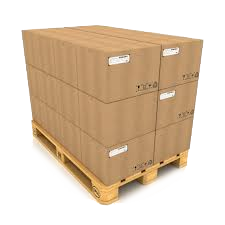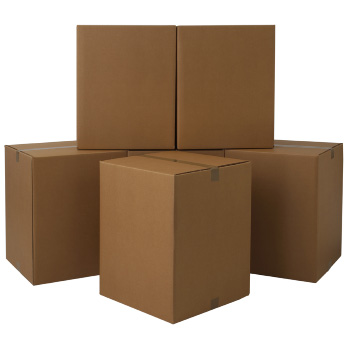 |
About the CUBIC METER & W/M = Weight or Measurement in respect of shipping ocean freight from the USA |
| A cubic meter is something 1 meter long by 1 meter wide by 1 meter high (or 3.28 feet long by 3.28 feet wide by 3.28 feet high) • 1m * 1m * 1m = 1 CUBIC METER • 3.28ft * 3.28ft * 3.28ft = 35 CUBIC FEET = 1 CUBIC METER Technically cubic meter could be any combination of lengths as long as all three dimensions multiplied together equals 1. • 0.5m * 0.5m * 4m = 1 CUBIC METER • 5ft * 7ft * 1ft = 35 CUBIC FEET = 1 CUBIC METER |
|||||
| UBIC METER IN THE OCEAN FREIGHT I. Cubic Meter in LCL - Less than Container Load ocean freight shipment Besides the shipping cost of your international ocean freight shipment, the advantage of shipping sizable cargo using LCL ocean freight service (Less than Container Load ocean freight service from international shipping companies) is because WEIGHT OF CARGO imported or exported from the USA IS NOT A PRICING FACTOR (this statement is not valid for extremely heavy cargo. Find about W/M limitations in respect of ocean freight below). Unlike with a parcel service or airfreight, international LCL ocean freight rates are primarily based on volume, but not on the weight of cargo. Ocean freight rates for international ocean freight shipments will be based on ocean freight rates per cubic meter, but not on the weight of cargo in kilos or pounds. When calculate LCL ocean freight rates, shippers should not not worry about weight of your cargo. Just disregard weight of your international ocean freight shipment when you use direct service from an international shipping company (ocean freight freight forwarder or NVOCC). If you use LCL ocean freight service, i.e. ship boxed cargo overseas, these pictures should give you an idea on how shipping boxes may fit into one cubic meter. |
|||||
|
|||||
Notice: YOUR CARGO VOLUME DOES NOT HAVE TO BE LIMITED TO ONE CUBIC METER. The total volume for your international ocean freight shipment will be derived as a sum of volumes of your shipping units including fractions. For example: |
|||||
| Using international LCL ocean freight service, you may ship overseas any volume and a wide variety of boxes. You can mix and match boxes of any size. You can ship boxes, crates, luggage or any other freight properly packaged and labeled for shipping purposes. Notice: this rules may not work if you ship ocean freight with an international moving company (most of the times when you are moving from the USA overseas). This topic is provide understanding of using service from international shipping companies (U.S. freight forwarder and NVOCCs). Information related to international moving companies services is widely presented in on line. Contact a particular international moving company in order to find services packages offered by international moving companies on shipping goods from or to the USA by sea. |
|||||
|
|||||
W/M = Weight or Measurement in respect of ocean freight and inland transportation (LTL) W/M is the acronym for Weight or Measurement commonly used in international and domestic cargo transportation industries. It means which ever is higher. W/M presents cargo density limit. I.e. light cargo is charged based on measure, while heavy cargo based on weight. W/M may differ among carriers. International shippers should be aware of CHARGEABLE WEIGHT AND CHARGEABLE VOLUME (WM) definitions used in different modes of cargo transportation. In respect of international ocean freight and domestic inland freight modes the meanings of WM are: INTERNATIONAL OCEAN FREIGHT MODE OF TRANSPORTATION: Since international shipping companies' vessel capacity is not really limited by weight of cargo but by the hold of the ship, then charges for regular ocean freight shipments are based on the total cargo volume. In general for ocean freight shipments, the weight of the cargo is not a pricing factor. However there is a cargo density limit if WM ocean freight rates are present. It varies depending on international ocean freight carriers, origins and destinations, etc. Regular international ocean freight shipments most likely will not exceed the density limit. In general exporters and importers have to be aware of the ocean freight "U.S. 45 lbs rule", 45 lbs = 1 cubic foot. This means that if density of international ocean freight exceeds 45 lbs per one cubic foot, then chargeable volume (total shipping cost) on the ocean freight will be calculated using this formula: Total Weight of ocean freight (in pounds) divided by 45 lbs = Chargeable Volume in cubic feet. The limit of 1 cubic meter = 750 kilos can be used as well. However depending on ocean freight carrier, origin and destination etc, it may vary: 1 cbm = 500 kilos; 1 cbm = 1000 kilos etc. The exporter or imported involved in an international ocean freight shipment should be advised about WM by the international ocean freight carrier when making a booking. THE U.S. DOMESTIC INLAND MODE OF TRANSPORTATION (Pickup or Line-haul charges):WM for Inland Trucking is more heavily restricted then in the international ocean freight mode of transportation and subject to actual or dimensional weight verification. In the USA chargeable weight for inland freight trucking should be calculated using this formula: Chargeable Weight in Pounds = Actual Weight of the freight OR (Length x Width x Height in inches) divided by 194, whichever is greater. If WM rules apply then it should be indicated in our documents for each international ocean freight shipment. II. Cubic Meter in FCL (Full Container Load in Ocean Freight) As a rule international ocean freight rates with FCL - Full Container Load in the international ocean freight industry are based on type on ocean freight containers, but on weight or volume shipped goods. In respect of the cubic meter shipper should be aware of CUBIC CAPACITIES AND PAYLOADS of multimodal sea freight containers to be shipped from or to the USA. |
|||||
Here are cubic capacities and payloads for mostly common used intermodal ocean freight containers: • 20' STANDARD SEA FREIGHT CONTAINER
• 20' STANDARD SEA FREIGHT CONTAINERCubic Capacity: 33.0 cbm (1,165 cubic ft) Payload* :22,100 kg (48,721 lbs) • 40' STANDARD SEA FREIGHT CONTAINER Cubic Capacity: 67.3 cbm (2,377 cubic ft) Payload*: 27,397 kg (60,401 lbs) • 40' HIGH CUBE SEA FREIGHT CONTAINER Cubic Capacity: 76.0 cbm (2,684 cubic ft) Payload*: 29,600 kg (65,256 lbs) *Payload weight exceeds over-the-road legal limits in US and Canada. Recommended maximum payload for the US and Canada is 35,000 lbs per 20' and 42,000 lbs per 40'. III. Cubic Meter in RO-RO (Roll On/Roll Off) Exemptions can be rates for shipping cars from US using Ro-Ro service. It can be a lump sum per vehicle depending on its size. For example: Cars up to 600 cubic feet of total volume and up to 1.6 meters high - $1,300 lump sum + BAF & CAF etc. However, that "lump sum" ocean freight rate is initially based on range of volume in cubic meters or cubic feet as well. |











